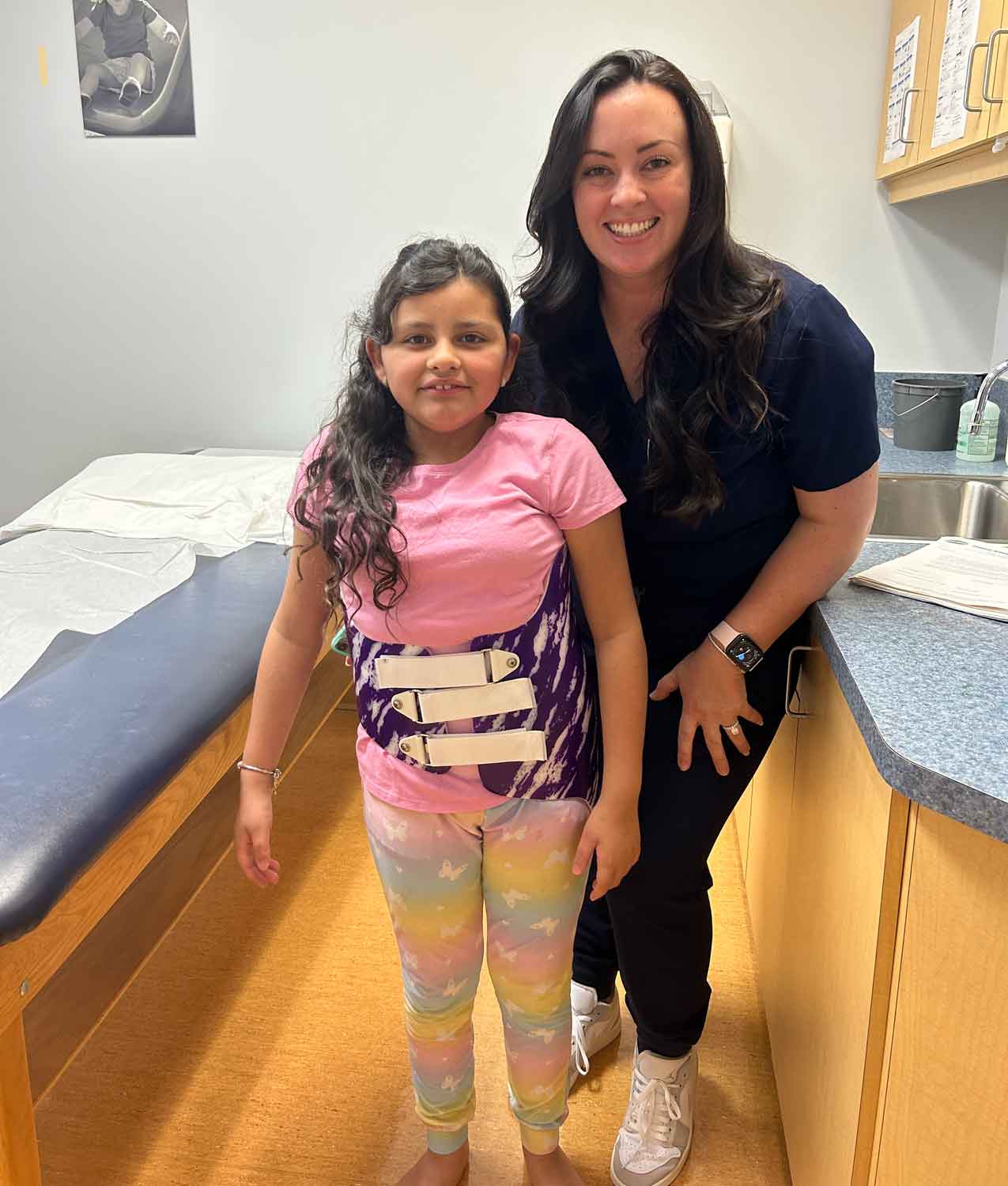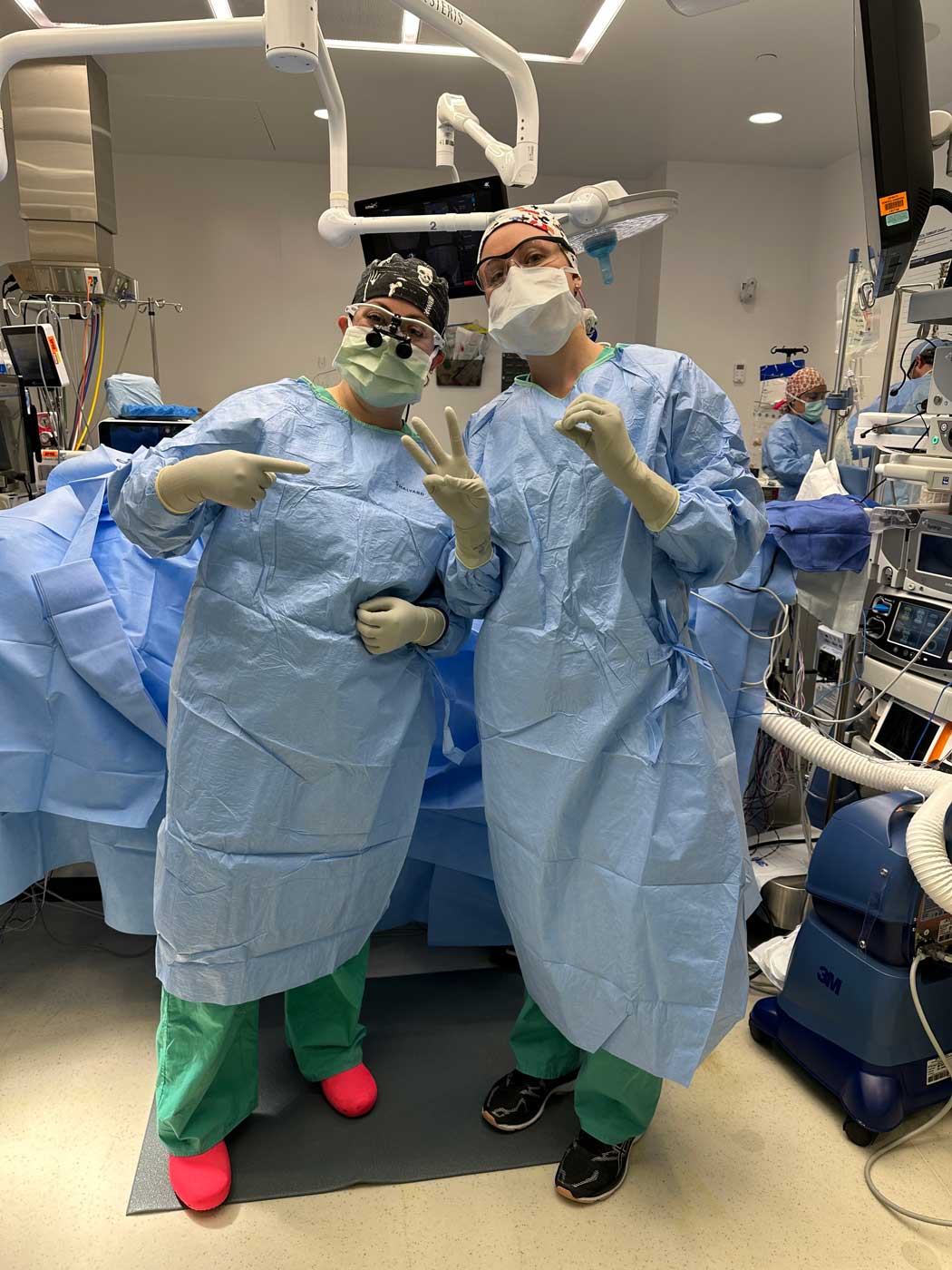Scoliosis and Spinal Conditions
Pediatric Orthopedics of SWFL is a leader in the care of infants and children with Scoliosis and spinal deformities. Our Scoliosis Center is staffed by a knowledgeable team of experts committed to caring for young patients with specialized orthopedic needs.


What Are Some Spinal Conditions?
Scoliosis is a medical condition in which a person’s spine is curved from side to side, shaped like an “s,” or may also be rotated like a “c.” It is a three-dimensional condition resulting in changes in shoulder heights, hip heights, and/or rib prominences. It is typically classified as one of the following: congenital (caused by anomalies present at birth), early-onset (childhood), idiopathic (no known cause), syndromic, or neuromuscular. Some examples of syndromic or neuromuscular causes include Down Syndrome, cerebral palsy, and spinal muscular atrophy. Scoliosis can also develop following a traumatic injury to the spine or spinal cord, or even after chest surgery.
Kyphosis is a condition where there is excessive rounding of the spine when viewed from the side. When there is increased kyphosis, some people refer to it as “round back” or “hunchback.” The normal spine has a straight appearance when viewed from the front or back, but has several normal curves when viewed from the side. The curves of the spine work together to provide balance and an upright posture. Sometimes, this increased kyphosis can be due to poor posture, other times it is due to anatomical changes, such as in congenital kyphosis or Scheuermann kyphosis.
Pediatric spondylolysis and spondylolisthesis represent a continuum of a spectrum of spine conditions. Spondylolysis is a stress fracture in a bone in the lower spine. It can happen from repeated stress or from an injury to the spine. Spondylolisthesis, on the other hand, happens when one of the stress fractures progresses to the point of causing the vertebrae to slip out of place. These conditions are one of the most common causes of back pain in children and adolescents.
Who is at risk?
Scoliosis and kyphosis can occur at any age and can be a hereditary characteristic. Adolescent idiopathic scoliosis and Scheuermann kyphosis are the most common type and often present after the age of 10, often during growth. There are no known specific causes of these conditions.
Congenital and early-onset cases are often seen as early as the first few months to years of life. Congenital scoliosis can be due to associated syndromes or present in isolation. This is a developmental issue where the spinal bones have not grown in an anatomic fashion. Early onset scoliosis can be idiopathic (no known cause) or associated with a syndrome or underlying medical condition. Additionally, spine conditions associated with syndromes or other underlying medical conditions can present at any time, but are most often seen during periods of growth spurts.
Spondylolysis and spondylolisthesis can present in up to 10% of adolescent athletes. It has even been implicated in up to 50% of low back pain complaints in this group. Particular athletes such as gymnasts, weightlifters and football linemen are at increased risk.

Spinal Conditions Management
Spinal fusion is the most widely performed surgery for scoliosis and kyphosis. The goal of this procedure is to correct the underlying abnormal curvature and to obtain a fusion in order to prevent further progression. This is typically done with the use of spinal implants consisting of screws and rods with the addition of bone graft to straighten the spine and create a stable foundation for a fusion to occur.
Modern spinal fusions generally have good outcomes with high degrees of correction and low rates of failure and infection. Patients with fused spines and permanent implants tend to have normal lives with unrestricted activities when they are younger. Most patients are able to participate in recreational athletics, have a natural childbirth and are generally satisfied with their treatment.
There are also newer non-fusion techniques for certain types of scoliosis. These procedures are indicated for very select patients based on the degree of curvature and age.
In scoliosis and kyphosis, the purpose of bracing is to prevent the curve from progressing to a point of needing surgery. It is only done when the patient has bone growth remaining and if the curvature is over 20-25 degrees.
In young patients with congenital and early onset cases, a plaster or fiberglass cast around the torso may be applied instead of a brace. For patients with scoliosis, the brace is custom molded to account for your child’s body as well as the curve characteristics. There are many braces available, most are fitted around the torso below the armpits and are worn under clothing quite inconspicuously. Bracing is generally recommended for 16 to 18 hours per day and until the patient reaches skeletal maturity.
Bracing can also be helpful for patients with spondylolysis and spondylolisthesis in terms of pain control. It is not a treatment modality.
In a very young child with curves that are not amenable to observation, bracing or casting, we use growth-friendly procedures that allow for continued growth of the spine. This consists of growing or telescoping rods that grow with the patient, while maintaining the spine in a stable way.
Surgical treatment for spondylolysis and spondylolisthesis as indicated for patients who have failed to obtain pain relief with therapy in bracing. Treatment for spondylolysis can consist of a pars repair where the stress fracture is stabilized with screws. In cases of spondylolisthesis, spinal fusion have a short segment is often required.
All of our spinal surgeries are done with maximum preparation and under the guidance of expert team members. Using a multidisciplinary approach of surgeons, anesthesiologist and intraoperative spinal cord monitoring, we prioritize the safety of your child over anything else. Recently, we have also obtained a 3-D/computer assisted navigation system for spine surgery.